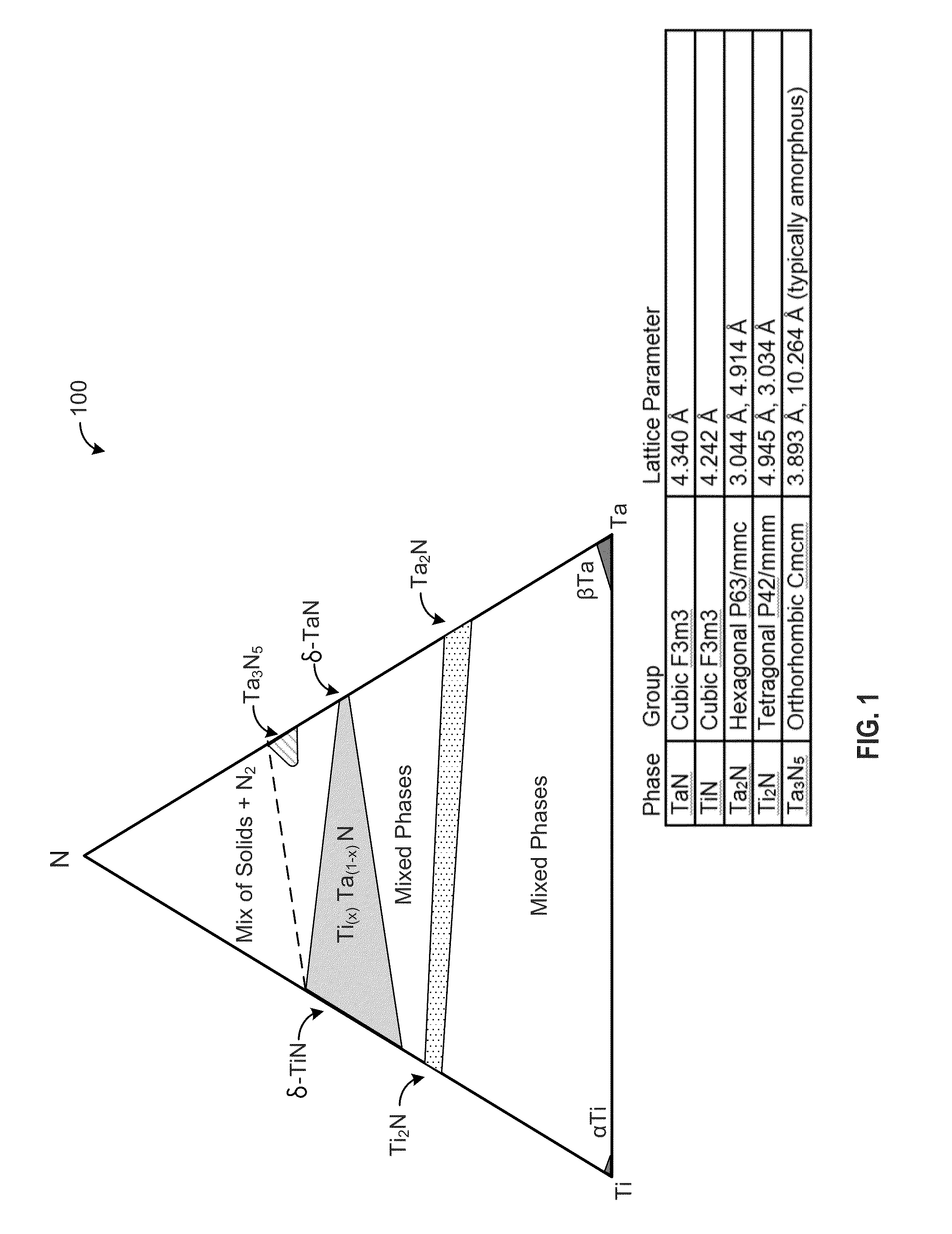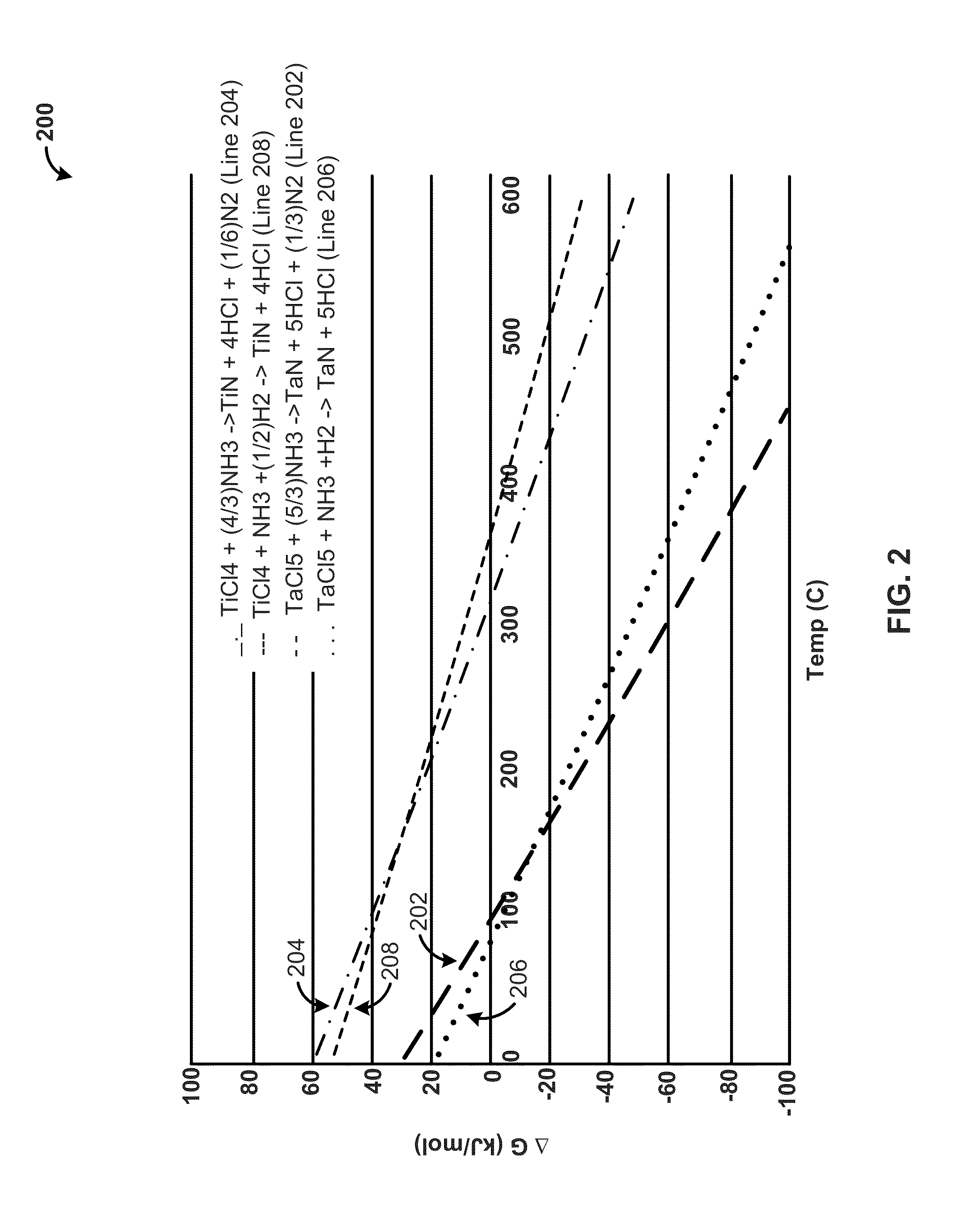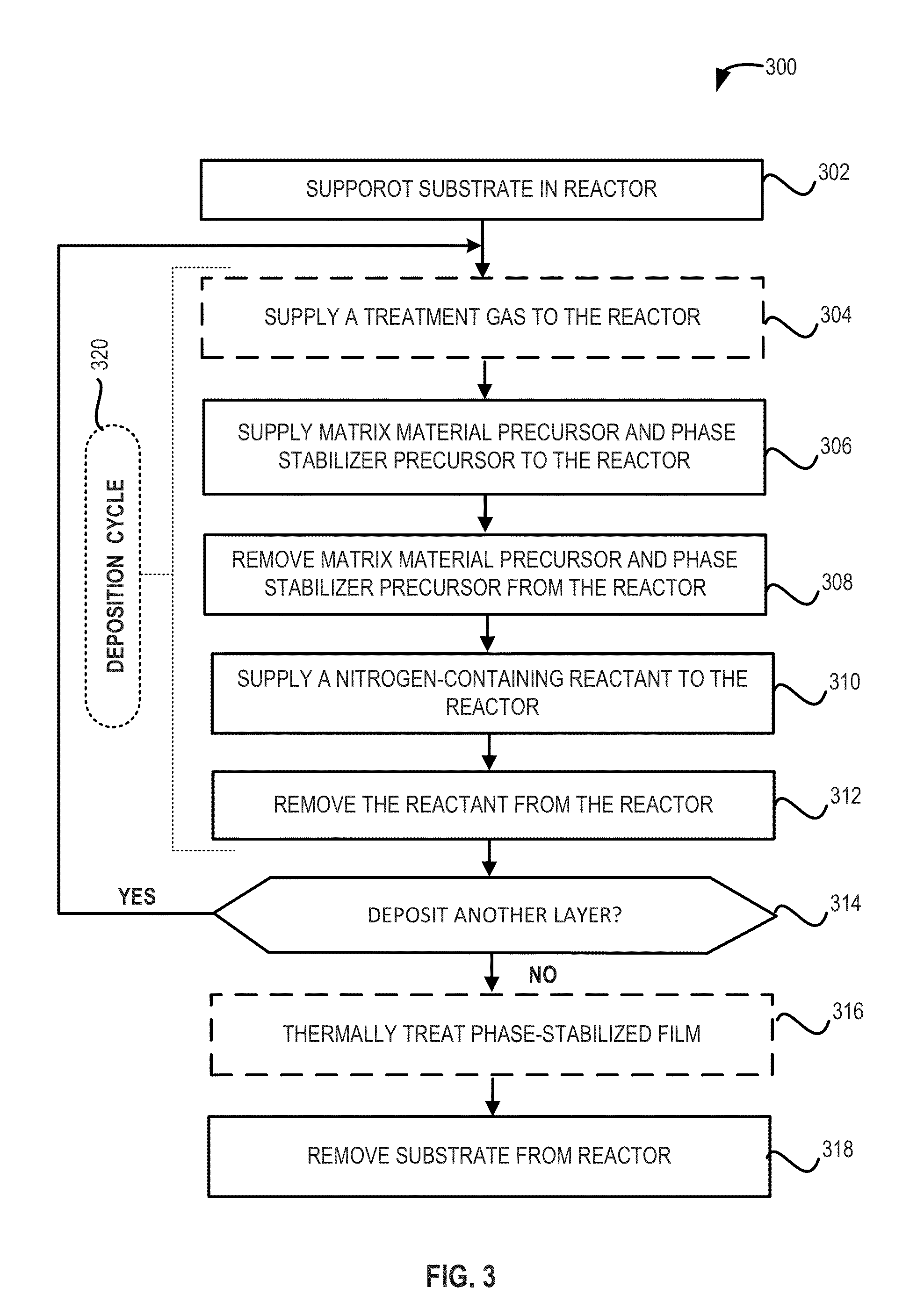Phase-stabilized thin films, structures and devices including the thin films, and methods of forming same
a technology of phase stabilization and thin films, applied in semiconductor devices, inorganic chemistry, chemistry apparatuses and processes, etc., can solve problems such as domain-specific work function differences, process problems, and inability to meet the requirements of feature-size-dependent performance variations, and achieve the effect of facilitating the formation of nitrogen-containing films
- Summary
- Abstract
- Description
- Claims
- Application Information
AI Technical Summary
Benefits of technology
Problems solved by technology
Method used
Image
Examples
Embodiment Construction
[0020]The description of exemplary embodiments of methods, structures, and devices provided below is merely exemplary and is intended for purposes of illustration only; the following description is not intended to limit the scope of the disclosure or the claims. Moreover, recitation of multiple embodiments having stated features is not intended to exclude other embodiments having additional features or other embodiments incorporating different combinations of the stated features.
[0021]The present disclosure relates, generally, to nitrogen-containing phase-stabilized films, to methods of forming the films, and to structures and devices including the films. As set forth in more detail below, nitrogen-containing phase-stabilized films in accordance with various embodiments of the disclosure include a phase stabilizer to stabilize a solid phase of the nitrogen-containing films. It will be appreciated that the embodiments disclosed herein may be used to form any suitable phase-stabilized...
PUM
| Property | Measurement | Unit |
|---|---|---|
| temperatures | aaaaa | aaaaa |
| temperatures | aaaaa | aaaaa |
| temperature | aaaaa | aaaaa |
Abstract
Description
Claims
Application Information
 Login to View More
Login to View More - R&D
- Intellectual Property
- Life Sciences
- Materials
- Tech Scout
- Unparalleled Data Quality
- Higher Quality Content
- 60% Fewer Hallucinations
Browse by: Latest US Patents, China's latest patents, Technical Efficacy Thesaurus, Application Domain, Technology Topic, Popular Technical Reports.
© 2025 PatSnap. All rights reserved.Legal|Privacy policy|Modern Slavery Act Transparency Statement|Sitemap|About US| Contact US: help@patsnap.com



